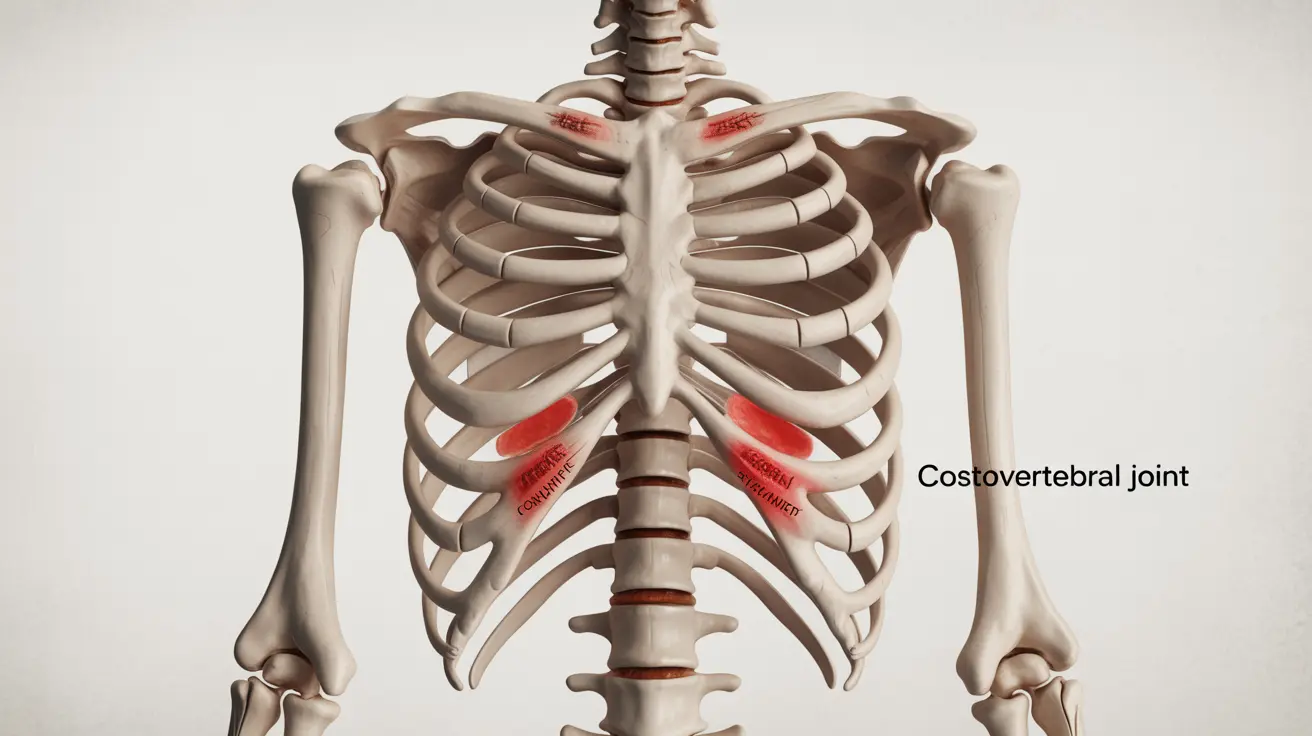Rib pain is a challenging but common symptom experienced by many people living with ankylosing spondylitis (AS). This chronic inflammatory condition can affect the joints between your ribs and spine, leading to discomfort and breathing difficulties. Understanding how to manage this specific symptom is crucial for maintaining quality of life with AS.
In this comprehensive guide, we'll explore the causes of rib pain in ankylosing spondylitis, available treatments, and practical strategies for managing this symptom effectively. We'll also discuss when to seek medical attention and specific exercises that can help improve chest mobility.
Understanding Rib Pain in Ankylosing Spondylitis
Ankylosing spondylitis primarily affects the spine, but it can also impact the costovertebral joints, where your ribs connect to your vertebrae. When inflammation occurs in these joints, it can cause significant pain and stiffness in the rib cage area. This inflammation may lead to reduced chest expansion and breathing difficulties over time.
The pain typically manifests as a sharp or burning sensation in the ribcage, which may worsen with deep breathing or certain movements. Some people also experience chest tightness or difficulty taking deep breaths, particularly during AS flares.
Medical Treatment Options
Several medical interventions can help manage rib pain associated with ankylosing spondylitis:
Medications
- Nonsteroidal anti-inflammatory drugs (NSAIDs)
- Disease-modifying antirheumatic drugs (DMARDs)
- Biological medications
- Corticosteroid injections for severe cases
Physical Therapy
Working with a physical therapist can be crucial in managing rib pain. They can develop a personalized exercise program focusing on maintaining chest flexibility and proper posture. Regular physical therapy sessions can help prevent the stiffening of costovertebral joints and maintain better breathing capacity.
Breathing Exercises and Techniques
Specific breathing exercises can help maintain chest flexibility and reduce pain:
- Diaphragmatic breathing exercises
- Chest expansion exercises
- Postural correction techniques
- Gentle stretching routines
These exercises should be performed regularly, but it's essential to start slowly and increase intensity gradually under professional guidance.
Lifestyle Modifications and Home Management
Several lifestyle changes can help manage rib pain effectively:
- Maintaining good posture throughout the day
- Using proper ergonomic support while sitting and sleeping
- Applying heat or cold therapy as needed
- Practicing stress management techniques
- Maintaining a healthy weight to reduce pressure on joints
When to Seek Medical Attention
While some level of rib pain is common with AS, certain symptoms warrant immediate medical attention:
- Severe, sudden onset of rib pain
- Difficulty breathing or shortness of breath
- Pain that significantly impacts daily activities
- New or changing symptoms
- Signs of infection or inflammation
Frequently Asked Questions
What causes rib pain in ankylosing spondylitis and how does it affect breathing?
Rib pain in ankylosing spondylitis is caused by inflammation in the costovertebral joints, where ribs connect to the spine. This inflammation can restrict chest expansion and make breathing more difficult, particularly during physical activity or when taking deep breaths.
How is rib pain from ankylosing spondylitis treated with medication and physical therapy?
Treatment typically involves a combination of anti-inflammatory medications (NSAIDs, DMARDs, or biologics) and regular physical therapy. Physical therapy focuses on maintaining chest flexibility and proper posture through specific exercises and stretches.
What breathing exercises can help reduce rib pain and improve chest expansion in ankylosing spondylitis?
Beneficial breathing exercises include diaphragmatic breathing, gentle chest expansion exercises, and postural correction techniques. These should be performed regularly and under professional guidance to ensure proper form and prevent injury.
Are there lifestyle changes or home remedies that can help manage rib pain caused by ankylosing spondylitis?
Yes, helpful lifestyle modifications include maintaining good posture, using proper ergonomic support, applying heat or cold therapy, practicing stress management, and maintaining a healthy weight. Regular gentle exercise and stretching can also help manage symptoms.
When should I see a doctor if I have persistent or worsening rib pain related to ankylosing spondylitis?
Seek medical attention if you experience severe or sudden onset of rib pain, difficulty breathing, pain that significantly impacts daily activities, or any new or changing symptoms. These could indicate a need for treatment adjustment or further evaluation.




